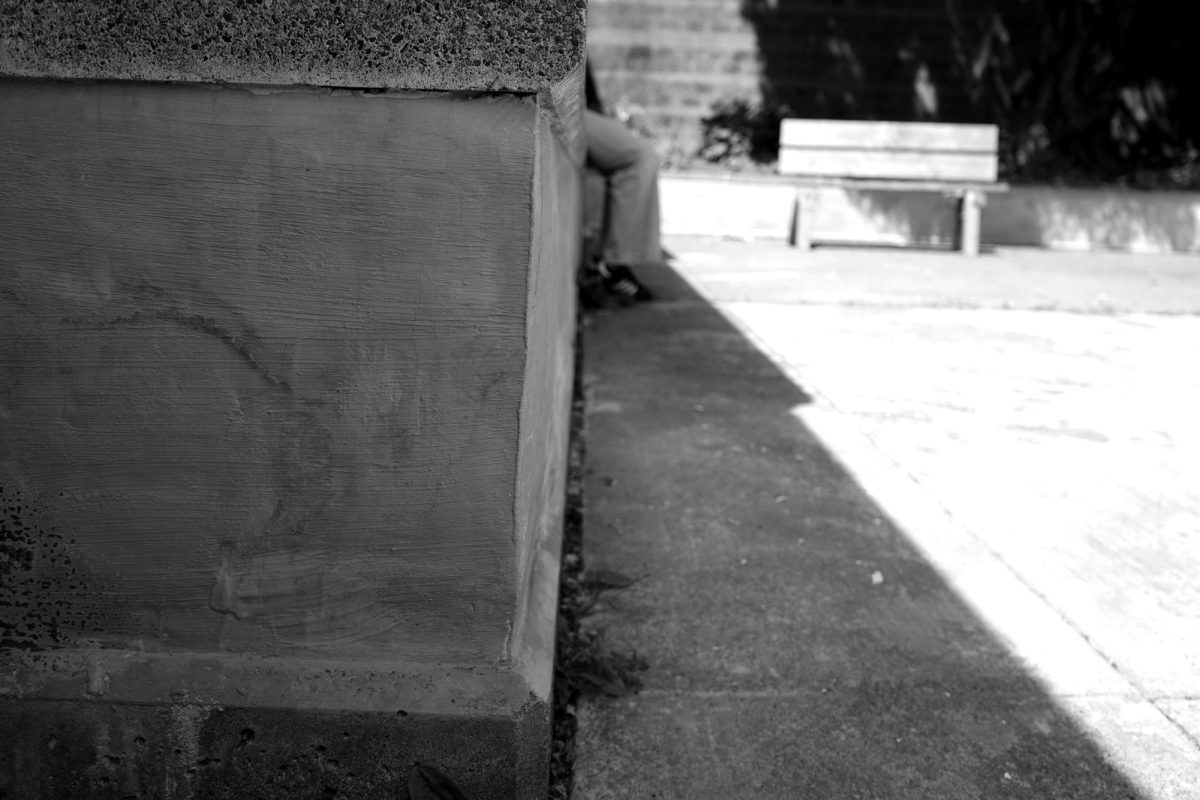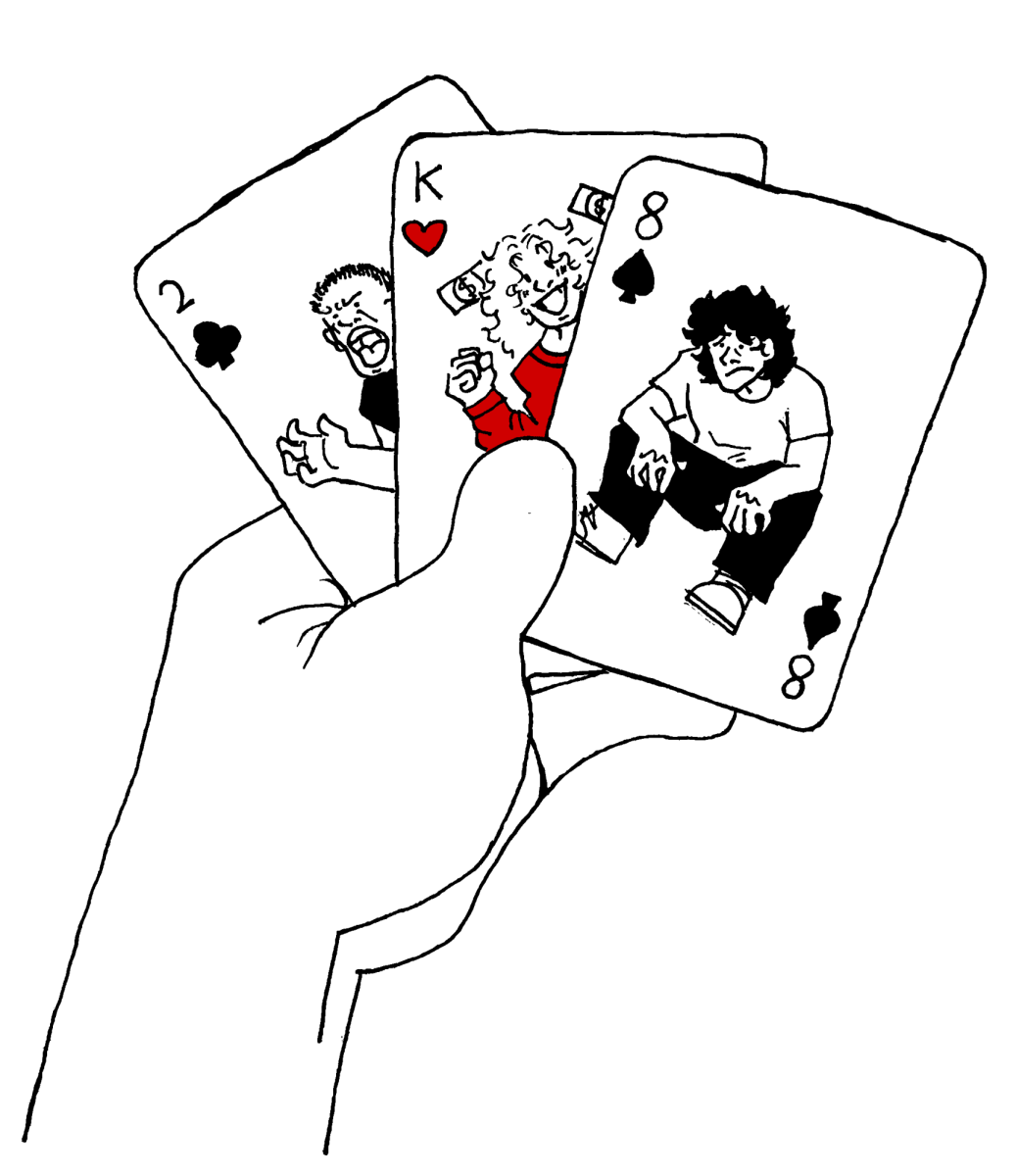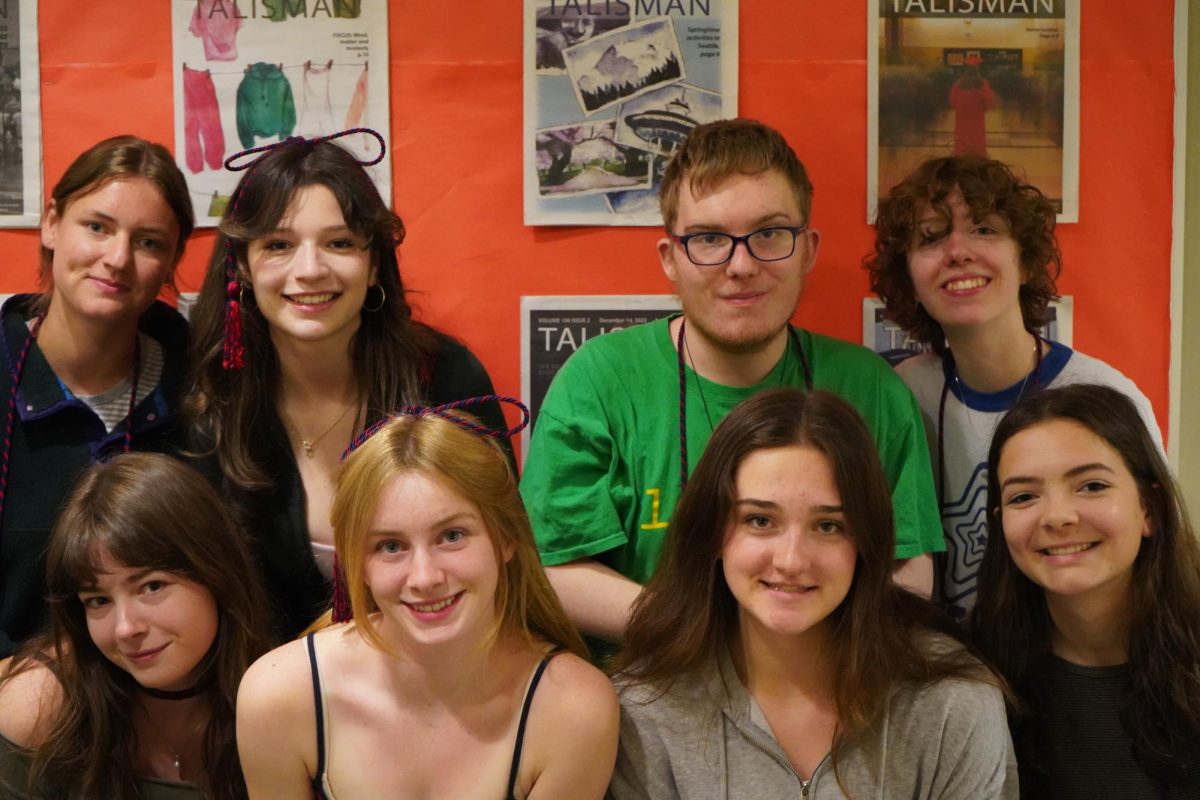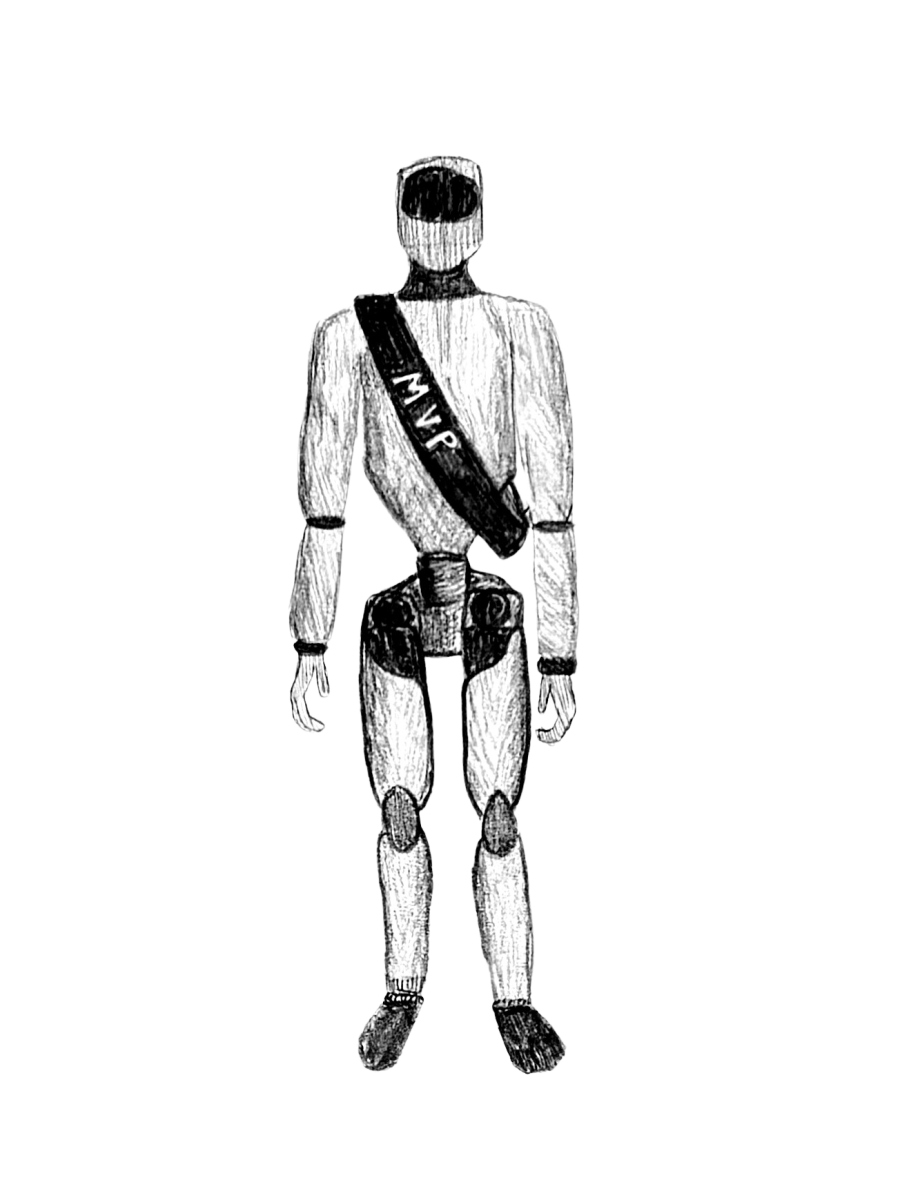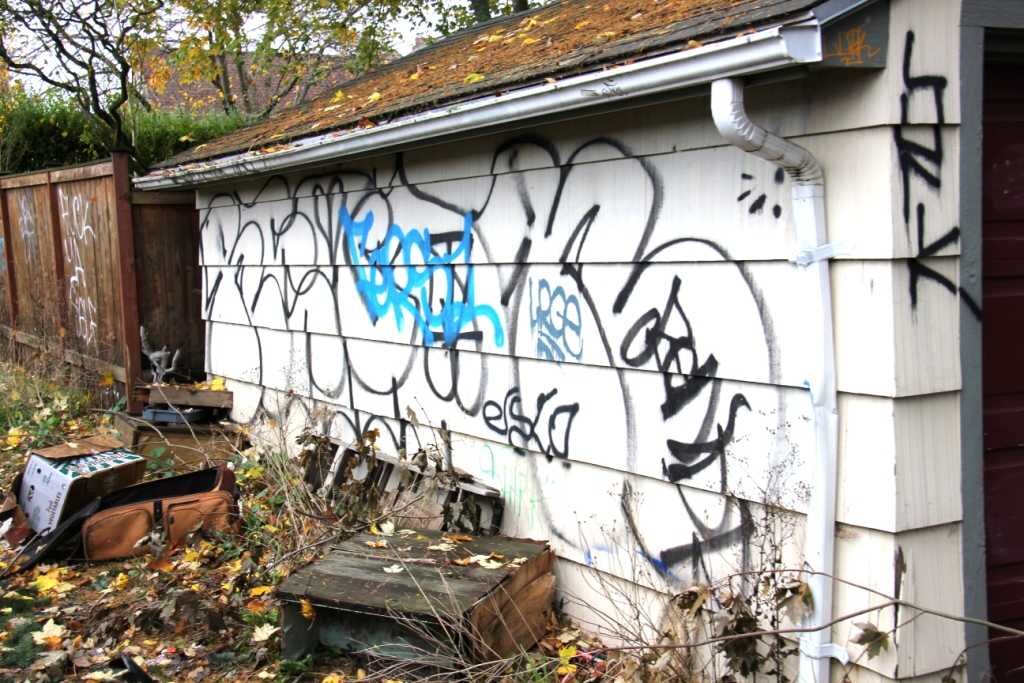Ian Tracy Gwin, Staff Reporter
Originally published November 14, 2013
Jason Michel
A graffitied garage located east of the football field.
Perhaps in the distant future, archaeologists will recover the sites of our daily lives from detritus and rubble, and, reading the cryptic hieroglyphics, make some final say on the purpose, value, and meaning of graffiti.
For now, however, tagging seems stuck between high art and total trash. The Seattle Police Department (SPD) defines the action as “vandalism without permission.” A recent article for Crosscut online by John D. Berry defines it as “high end logos…[or] murals” and “the annotation…of public space.” An internet search for “Seattle Graffiti” yields the SPD website followed by a flickr stream of local snapshots.
Neither is Ballard exempt: from its bathrooms to the main staircase, the schools’ halls and walls are subject to markers, paint, and pencil. Last fall a group of students tagged the outside of the front door and the commons with “BHS 2017.” Ballard’s graffiti even extends to the private properties surrounding the area; a major problem for Ballard’s security specialists.
“Nine out of ten taggers are young high schoolers,” said SPS Security Specialist Greg Taufaasau, who was assigned to the school last year. Taufaasau, who has experience with the large amounts of gang graffiti at South End schools, is carefully keeping tags on taggers with the help of the security team.
“We record every graffiti…in [the] surrounding area businesses in the neighborhood within a mile,” he said, “We take a photo… and contact a department in the district in order to have it checked.” The photographs, which go into a database, serve as records to track and identify the taggers.
Afterwards, a graffiti from Seattle Public Utilities is called in to restore the school’s property to its original state. According to an article for the Seattle Times in 2010, Seattle Public Utilities spent about $1 million in 2009 for graffiti removal and its associated processes.
“When we do talk to kids we will check them out and sometimes we can catch some,” said Taufaasau, who recently caught a group of taggers using the database, Seattle Police Department (SPD) aid and reports from the community and other Seattle schools. “It takes a lot to clean up,” he said. “Sometimes people get careless.”
At his office off the side of the commons, Taufaasau pulls up a picture of a careless decision: a bathroom wall besmirched in dark scribblings hailing “H.O.V.E.R.”
“This is supposed to be HOOVER, a central district gang,” he said, “but they misspelled it ‘hover.’” Looking at the style, location, and occasional grammatical errors of the school’s graffiti, Taufaasau and the security staff can sometimes catch taggers who, more often than not, aren’t in gangs.
“Here at Ballard [people make] identity graffiti,” he said. “Trademark[s] for people to look at.” Accompanied by pictures of stalls covered in cryptic writing, Taufaasau explains that much of the school’s graffiti is an additive process of students publicly reacting to tagging with tagging, etching immense dialogues on bathroom walls and mirrors.
While tagging according to Taufaasau, is a “sore eye for the community,” he is no stranger to graffiti’s public art persona. Years ago he worked for the parks graffiti club, a program that got tagging youth off the streets by requesting public space for murals. For Taufaasau, however, SPS has since then become “out of touch with taggers.”
“Kid’s are brain dead,” security specialist Craig “Bear” Plummer said.“It does damage…things have to be replaced.” According to Plummer, high school graffiti comes in waves, but eventually, “everything is about funds.”
This may be true, not only because of the urban poverty that sometimes accompanies graffiti, but also to the restitution put upon the schedule of student’s caught tagging. In order to graduate, Plummer says, they have to pay the fines, “just like returning textbooks.”
Tagging and graffiti may be the voices in our community that, like it are not, request listeners. Graffiti is a practice built out of secrecy and anonymity where taggers speak only through their actions. But if tagging is meant to send a message, why do its messengers remain publicly silent?
“[Taggers] do it to leave their personal mark in visible places [and] risky situations,” an anonymous student involved in Seattle’s street culture said. It’s “for the rush you get walking away scot free…People try to connect graffiti with art. It’s not art; it’s meant to be destructive and illegal.”
Writing for Crosscut Online, journalist Lily Cutler described the opinion of most people walking by graffiti: she has “no interest in arguing either side” of graffiti’s art/vandalism debate. While many at Ballard may ignore or balk at the markings all over Ballard High and the neighborhood, it is still being written and still being taken down.
“Depending on what side look on…graffiti plays negative and positive roles in Seattle’s culture,” the same student said. “[It’s] a crime, and usually valueless, but its cool to look at except almost all of the graffiti at Ballard High.”
On-campus graffiti differs greatly from the high-end murals that fill coffee table books and secure the title of “high art.” Most of the marks spotted by janitors and cataloged by Taufaasau bear resemblance to HOVER: black and bold writings written with emphasis on message and not on design.
But what do these messages mean? Gang or personal, tagging and graffiti is an act of writing linked with both “personal markings” and “risky situations.” While many, including our source, do not mention aesthetic beauty in Ballard’s tagging, the act of writing on one’s surroundings – in spite of the rules – itself makes a larger mark.
According to Taufaasau, many taggers believe graffiti is part of a larger tagging culture akin to hip-hop. That students are “out of touch” with the kind of community Taufassau provided with his graffiti-club suggests that the school’s “identity” taggers may be looking for their “crew” through gangs like “HOOVER,” or the very act of tagging itself.
In this sense, whose to say they aren’t alone? Establishing a personal “brand” or logo through identity tagging may just be the way for a media-minded student to find refuge in a group of 1,000 plus people. However, these actions cost money, and spelled right or not, Ballard’s graffiti keeps going up and continues to be taken down.



